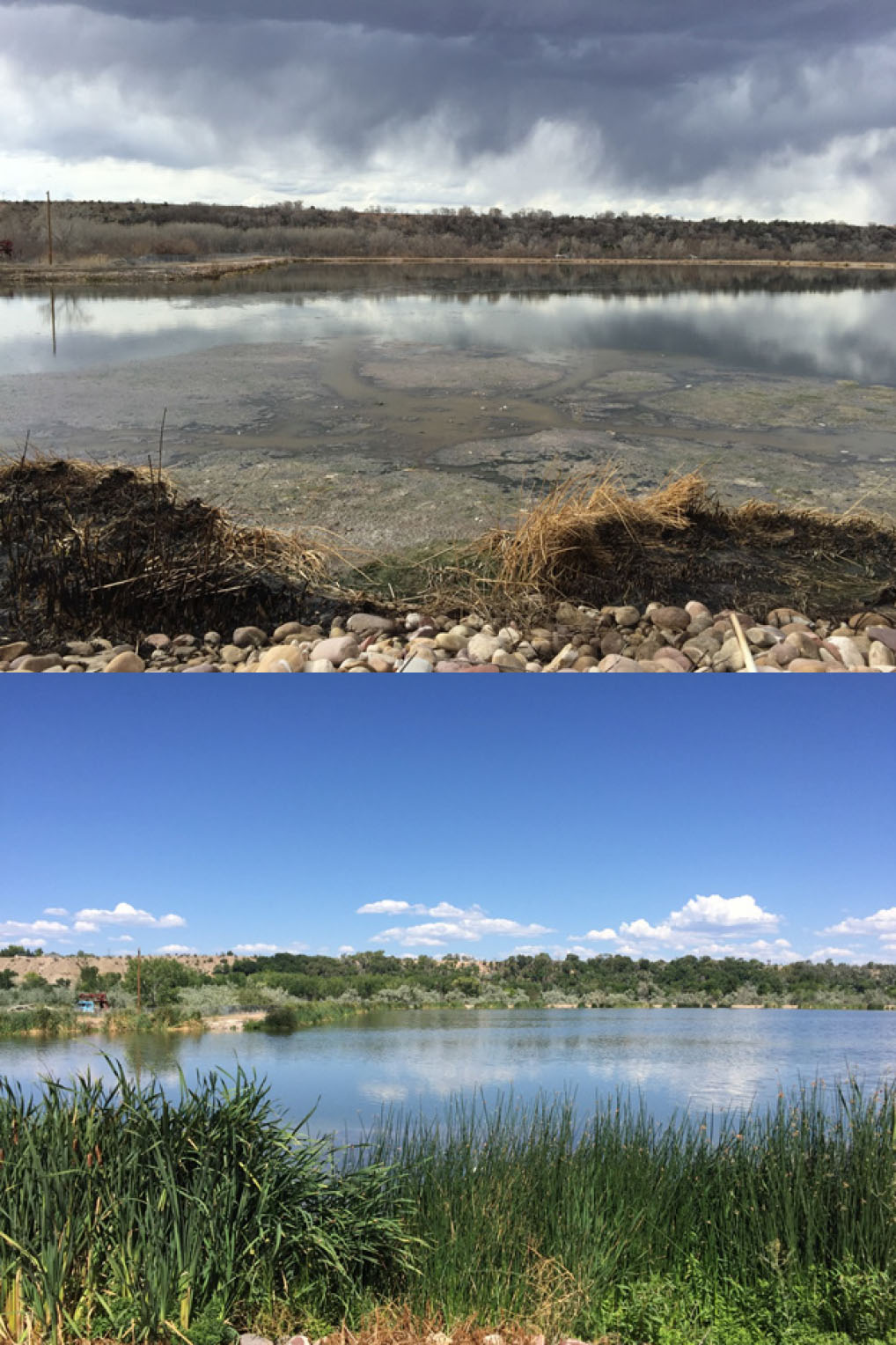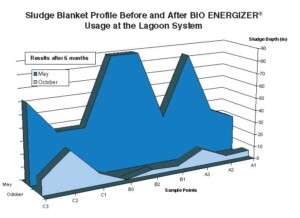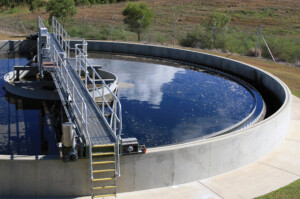
The influent consisted of domestic waste as well as septic. Pond 1 was specifically being addressed due to a State mandate. A sludge judge was performed which showed Pond 1 had an average sludge depth of 2.7 feet and Pond 2 averaged 1.9 feet. Two years later surfacing sludge prevented a sludge judge from being performed. The system was in need of reducing the sludge in its lagoon wastewater system to meet state requirements quickly in preparation for additional capital changes to the system.
Dredging costs were more than the town could afford, so an alternative method was sought to biologically break down the accumulated solids. To continue reading . . . Download PDF Read Online
Related Posts

BIO ENERGIZER® Reduces Sludge, BOD, and Odor—City in Illinois
A small town in Illinois (pop. 3,500) had a municipal wastewater system that was in need of sludge removal. The sludge accumulation problem had become so problematic that the sludge was visible at the surface. The exposed sludge was causing an odor problem for the nearby residents. In addition, due to the high solids accumulation,

Bio Energizer, Micatrol & Bio Feed Reduce COD and Stabilize Wastewater Treatment for Plastic Producer
A plastic manufacturer in Taiwan needed a new process to efficiently treat elevated incoming chemical oxygen demand (COD) to comply with stringent EPA regulations for effluent discharge. The plant is an activated sludge treatment system with an influent of approximately 2,000 cubic meters per day (CMD) which is equivalent to approximately 530,000 gallons per day

Municipal Wastewater Solutions
Experience the world’s most efficient wastewater remediation products, for operational stability of municipal wastewater treatment plants.

